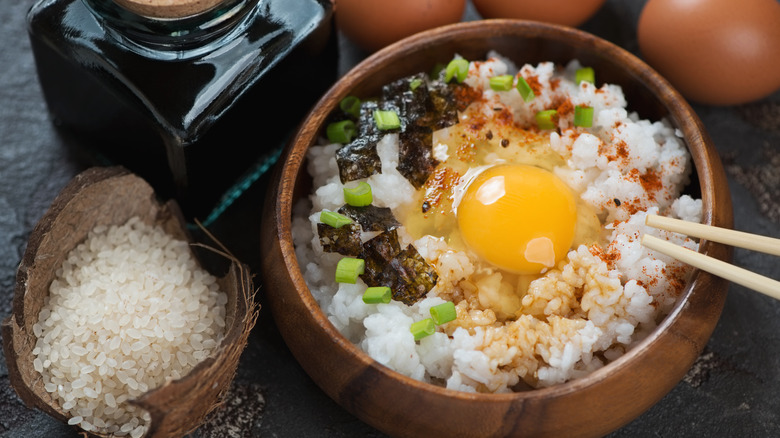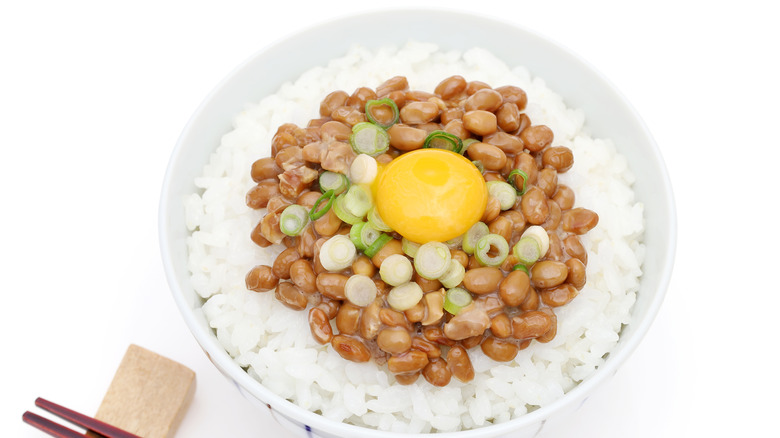Tamago Kake Gohan Combines Raw Egg And Rice For Creamy, Comforting Results
While many Japanese inventions are famed for their efficiency, Japan's culinary legacy is filled with delicate, perfectly executed, and beautifully presented dishes — and tamago kake gohan is a simple breakfast that demonstrates both artfulness and efficiency in one creamy and comforting dish.
Meaning "egg on rice," tamago kake gohan is one of the most common breakfast comfort foods in Japan. True to its name, tamago kake gohan involves cracking a raw egg over a bed of hot rice with a dash of soy sauce, then vigorously stirring with chopsticks. The residual heat from the rice lightly cooks the egg as you stir it, giving the rice a risotto-like consistency and a rich, savory flavor with an umami finish.
While many famous egg dishes exist in modern Japan, eggs themselves are relatively new to Japanese culinary traditions. Tamago kake gohan subsequently didn't achieve wider notice until eggs became a more ubiquitous household item during the first half of the 20th century. It's largely believed that a journalist named Ginko Kishida created and promoted the dish at the turn of the 20th century to popularize the use of eggs and poultry in Japanese cuisine. Today, tamago kake gohan firmly holds its place as a comfort food, using the most fundamental Japanese ingredients and raw-adjacent cooking styles that characterize Japanese culinary methodology.
Variations and techniques for tamago kake gohan
One of the reasons tamago kake gohan is so popular is because it requires only the most basic ingredients and is nearly effortless to make. That said, there are two techniques to choose from to incorporate eggs into rice: You can crack an egg directly into the bowl of rice or add a beaten egg to a hollowed-out crater of rice. Either way, hot rice and forceful stirring with chopsticks are key to incorporating the egg and aerating its components for the fluffiest, richest bowl of tamago kake gohan.
Soy, tamari, MSG, and furikake are among the most common additives to supply the umami finish, but tamago kake gohan's richness and simplicity leave it open to countless variations. Any additional ingredient would elevate a simple bowl of fluffy egg rice, whether it's a traditional Japanese inclusion or not.
For instance, if you enjoy funky or fishy umami flavors, nori, natto, miso paste, and bonito flakes are all ready-made additions. Diced scallions, radishes, avocado, sesame seeds, sesame oil, red pepper flakes, or a spoonful of chili crisp are also an easy way to add pops of spice, earthiness, or nuttiness. Pickled ginger, a squeeze of lime juice, or a drizzle of rice vinegar would brighten your bowl with a burst of tanginess. And while it's not necessarily a variation you'd be likely to see in an average Japanese home, a version inspired by Western culinary traditions using parmesan cheese, cured ham, bacon, or butter can transform tamago kake gohan into a decadent breakfast bowl that's still in keeping with the comforting spirit of the dish.

